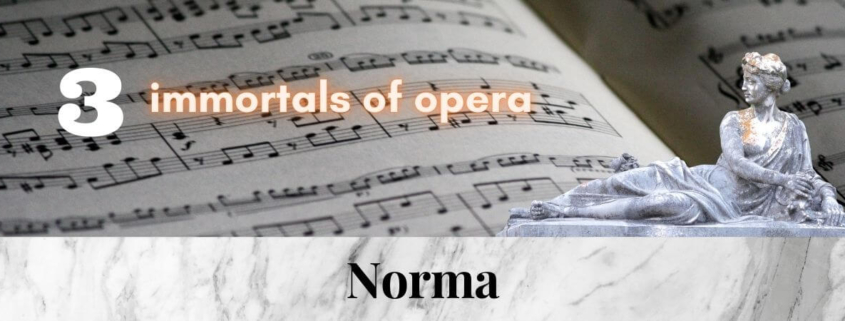Norma is an effective opera written in the heroic spirit of its time. A story full of passions and with a tragic ending. What Lucia di Lammermoor was for Donizetti is Norma for Bellini, it is his signature work and perhaps the greatest work of the bel canto era.
Norma’s famous aria “Casta Diva”
The aria takes place on a moonlit night. Bellini’s orchestral accompaniment is simple, each word intelligible through the restraint of the orchestration, giving dramatic significance to the meaning of the text and thus to the ritual of the Druids.
The aria was written in close collaboration with Giuditta Pasta, the singer in the premiere. Bellini is said to have written no fewer than nine drafts. He had already developed the part of Amina in “La sonnambula” with Pasta. Originally Bellini wrote the aria in G major. But Pasta wanted it a little lower. Since then, it has usually been sung in the F major variant (i.e. one tone lower).
Bellini wrote an accompaniment with a fixed accompaniment pattern. An undulating 12/8 meter allows the singing voice the freedom of rubato, the voice floats above the orchestra, and the singer can thus give the aria her imprint. Verdi spoke of Bellini’s “long melody”, which requires perfect legato and the long breath from the singer. Bellini’s style is known to have inspired Chopin. Many of his nocturnes are written exactly in this style:
Casta Diva became one of the greatest and most important arias of bel canto. The combination of a broad crescendo and a soaring melody move the listener and, together with the magic of the moonlit night, create a coherent and gripping sound painting.
The recording is by Maria Callas from the complete recording with conductor Votto, a live recording. The cantilena floods, and the high B is beautifully sung.
Casta Diva – Callas
The great trio with a voice like a burning arrow
In Norma, embellishments of the vocal part do not have virtuosity as their goal (as in Rossini), but are vehicles of emotion. In this section, it is Norma’s anger. Interestingly, Giuditta Pasta was also said to use her fioritures sparingly, using them only where they served a dramatic purpose.
The part of Pollione is also one of the more demanding parts due to the difficult ornaments and requires a stupendous singing technique.
We hear the great tercet of the act ending with three great voices in the 1954 Callas recording. Listen to the glistening fireworks of Callas beginning at 2.30. It is a sound like a fiery arrow, unique as only Callas could do. Listening to it, you can feel how she literally burned her voice.
Perfido! Vanne si, mi lascia indegno – Callas / Simionato / del Monaco.
‘ mobile_image=” attachment=” attachment_size=” format=’16-9′ width=’16’ height=’9′ conditional_play=” av_uid=”]
The great duet of Norma and Adalgisa – “Mira, o Norma”
Mira o Norma: It is perhaps Bellini’s most beautiful and famous duet, sung by the two female voices of Norma and Adalgisa. Again, Bellini has the orchestra play a swaying accompaniment in the first part and an intimate melody touches the listener. Then the two priestesses sing the voices with beautiful ornamentation in the enchanting interval of thirds. In the second, fast section, Bellini syncopates the voices and adds a lovely effect with the rising dotted eighth-note scales.
We hear a congenial pair in the recording of Marylin Horne and Joan Sutherland. John Steane the famous English critic said of the two, “The partnership of Horne and Sutherland is the most brilliant in the history of the record.” Kesting had this to say about this recording, “In the tightness of the voices we experience a virtuosity unparalleled after the war.” Listen, for example, to the ending beginning at 5:14!
Mira, o Norma – Sutherland / Horne








Leave a Reply
Want to join the discussion?Feel free to contribute!